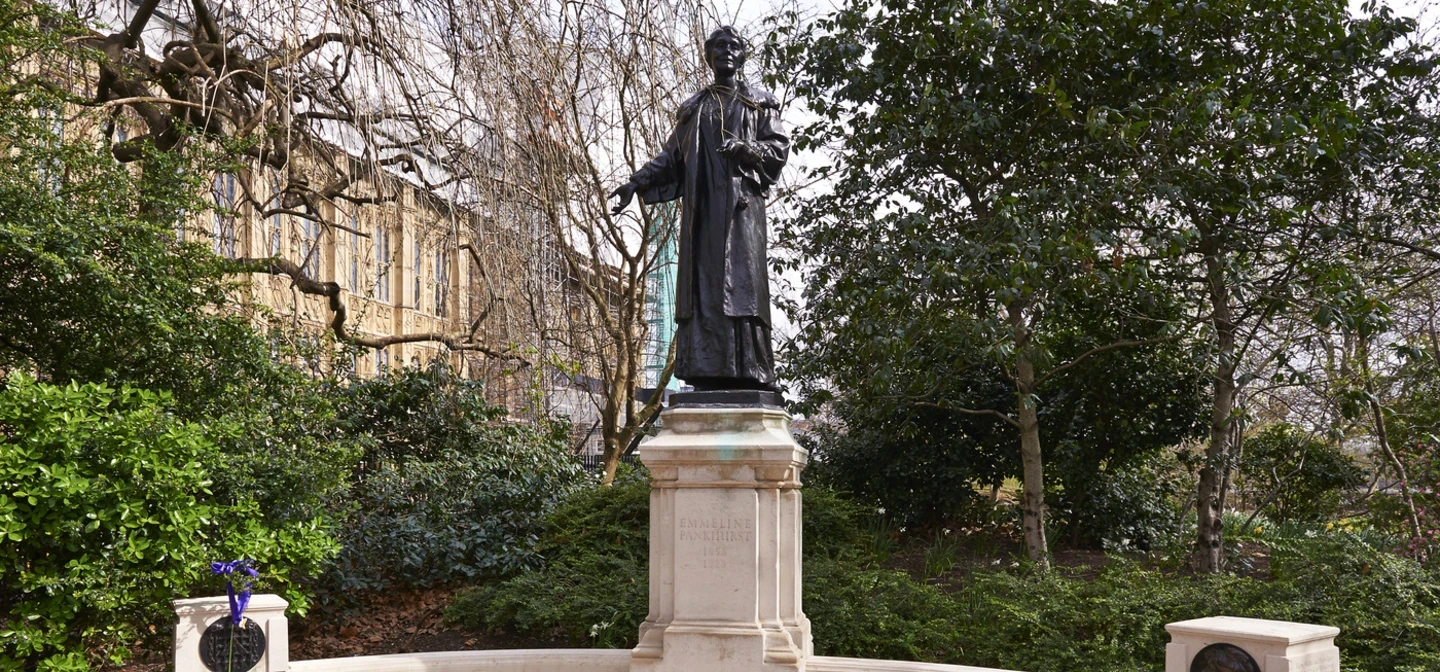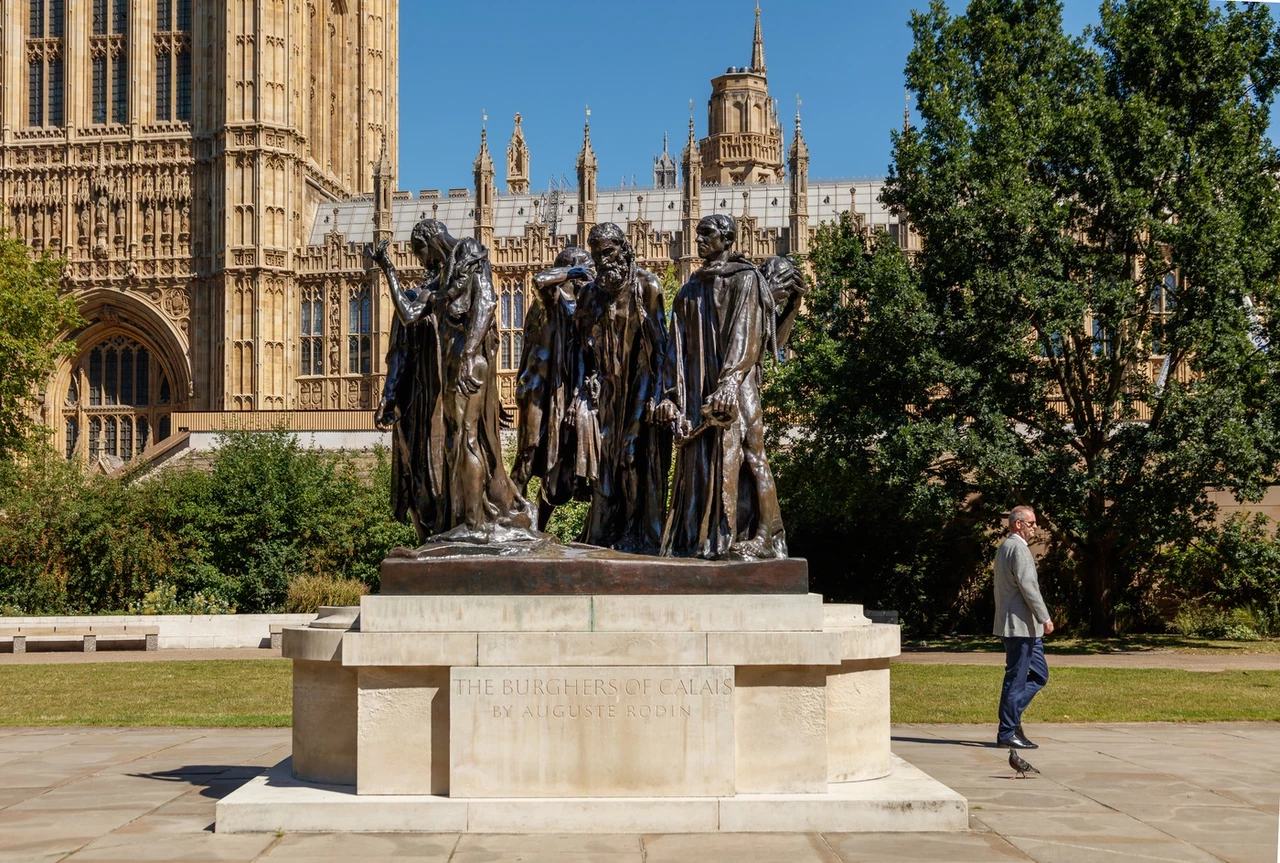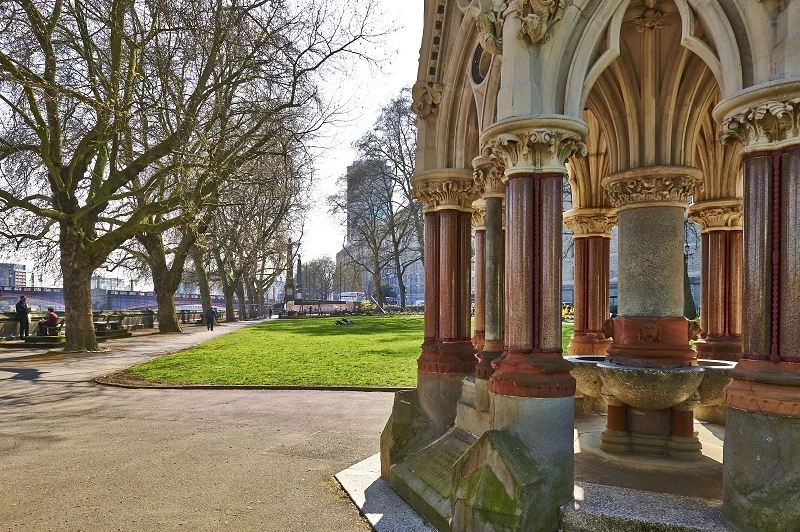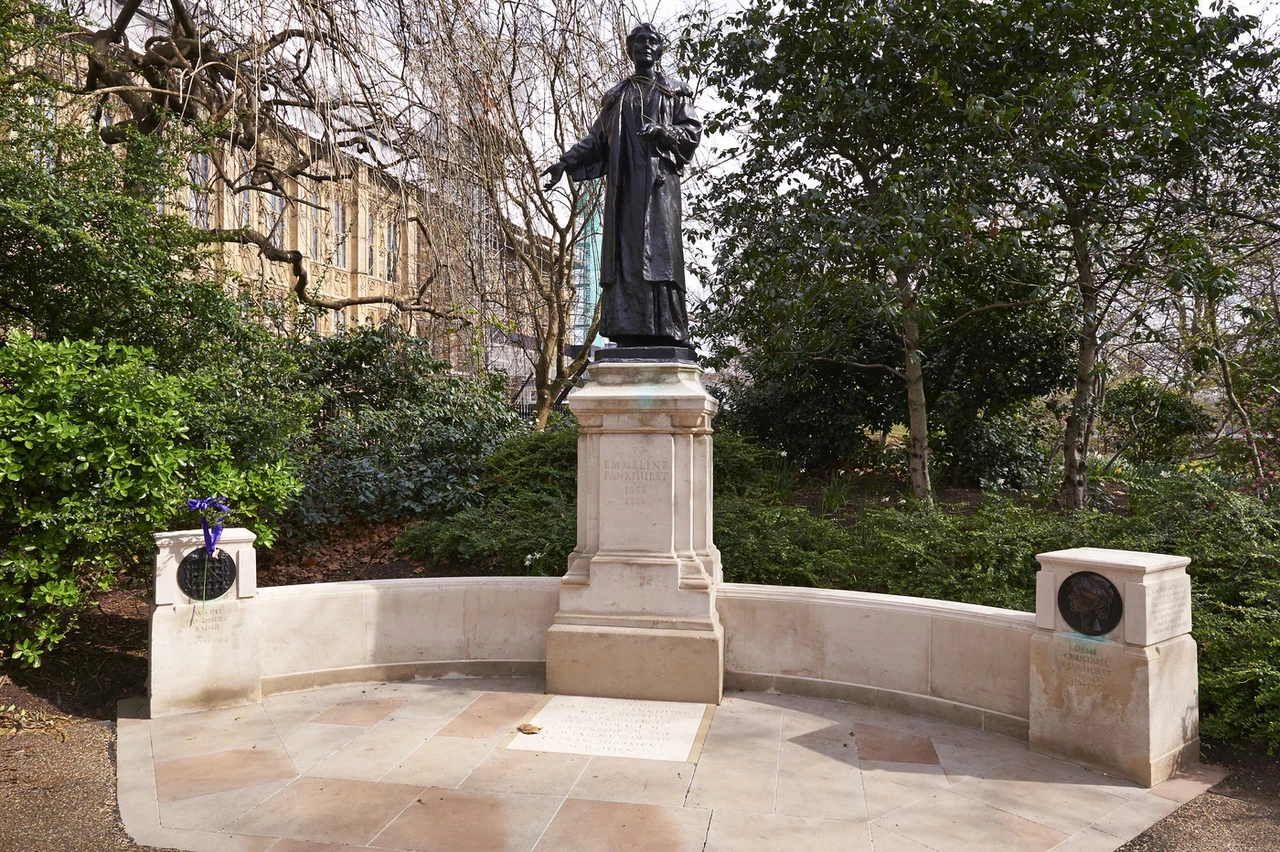
Monuments in Victoria Tower Gardens
Key information
Victoria Tower Gardens boasts a stunning range of sculptures that celebrate freedom.
A riverside sanctuary in the political heart of Westminster
As you enter the park from Parliament Square, you’re greeted by an icon – Emmeline Pankhurst, the courageous suffragette who led the campaign that helped win women the vote. The statue was unveiled in 1930 by Prime Minister Stanley Baldwin. Emmeline Pankhurst has another important connection with The Royal Parks, as she is buried at Brompton Cemetery.
Just beyond Pankhurst is Auguste Rodin’s sculpture, The Burghers of Calais, telling the story of the siege of Calais which took place in the 1400s. The original stands outside Calais town hall, but Rodin had a number of casts made and travelled to London from his native France to advise on its placement.
Towards the other end of the park, is a memorial that celebrates the abolition of the slave trade. Known as the Buxton Memorial, it commemorates the work of MP Thomas Fowell Buxton – a prominent anti-slavery campaigner. The spectacular, colourful memorial originally sat on the edge of Parliament Square, but it was moved to Victoria Tower Gardens in the 1950s.
To find out more about these special works, explore the links below.
| Monuments index |
|---|
Burghers of Calais
The Burghers of Calais, by the French sculptor, Auguste Rodin, represents the idea of freedom from oppression. It tells the story of the siege of Calais in 1347, during the Hundred Years War.
Calais had been surrounded for a year by English soldiers under King Edward III. Six leading citizens of Calais, the Burghers, offered to die if Edward spared the rest of the town's people.
Edward's wife, Queen Philippa, heard about the Burgher's offer and asked if they could also be spared if the town surrendered. Edward agreed and all the people of Calais were allowed to leave.
Rodin made his original sculpture in 1889 to stand outside Calais town hall and later made four casts, of which this is one. It was bought by National Art Collection Fund in 1911. Rodin came to London to give advice on where to put it.

Buxton Memorial
The Buxton Memorial celebrates the abolition of slavery and commemorates the work of the MP Thomas Fowell Buxton.
Buxton campaigned against slavery in parliament and helped to found the British and Foreign Anti-Slavery Society to abolish slavery throughout the world.
The monument was first installed on the edge of Parliament Square in 1865 by Buxton's son, Charles. It was moved to the gardens in 1957. The designer was Samuel Sanders Teulon.

Emmeline Pankhurst Memorial
This is the memorial to Emmeline Pankhurst, the leader of the suffragettes who campaigned for women's right to vote. She died in 1928, a month before all adult women could finally vote in elections.
The memorial is by A G Walker, who also sculpted Florence Nightingale in Waterloo Place. Musicians from the Metropolitan Police, some of whom had arrested the suffragettes during demonstrations, asked to play for the ceremony.
The statue shows one of Mrs Pankhurst's familiar gestures. She was a great public speaker and often went to the theatre to copy the voices of her favourite actors. Inside the pedestal, there is a metal box containing Mrs Pankhurst's letters and the obituary to her in The Times.
Emmeline Pankhurst is buried in Brompton Cemetery where you can visit her gravestone.
